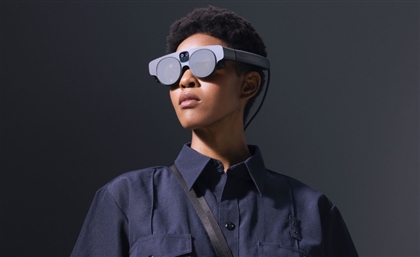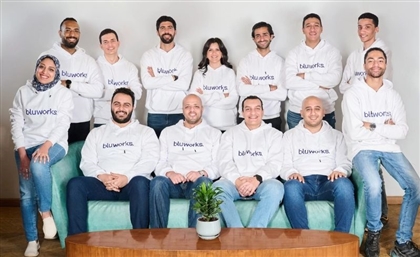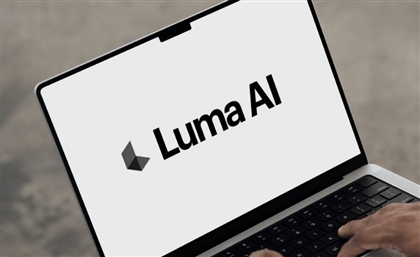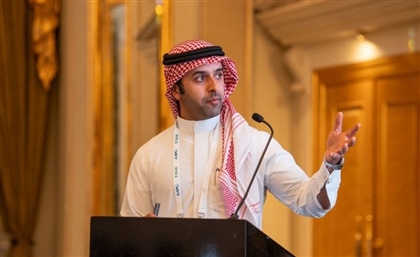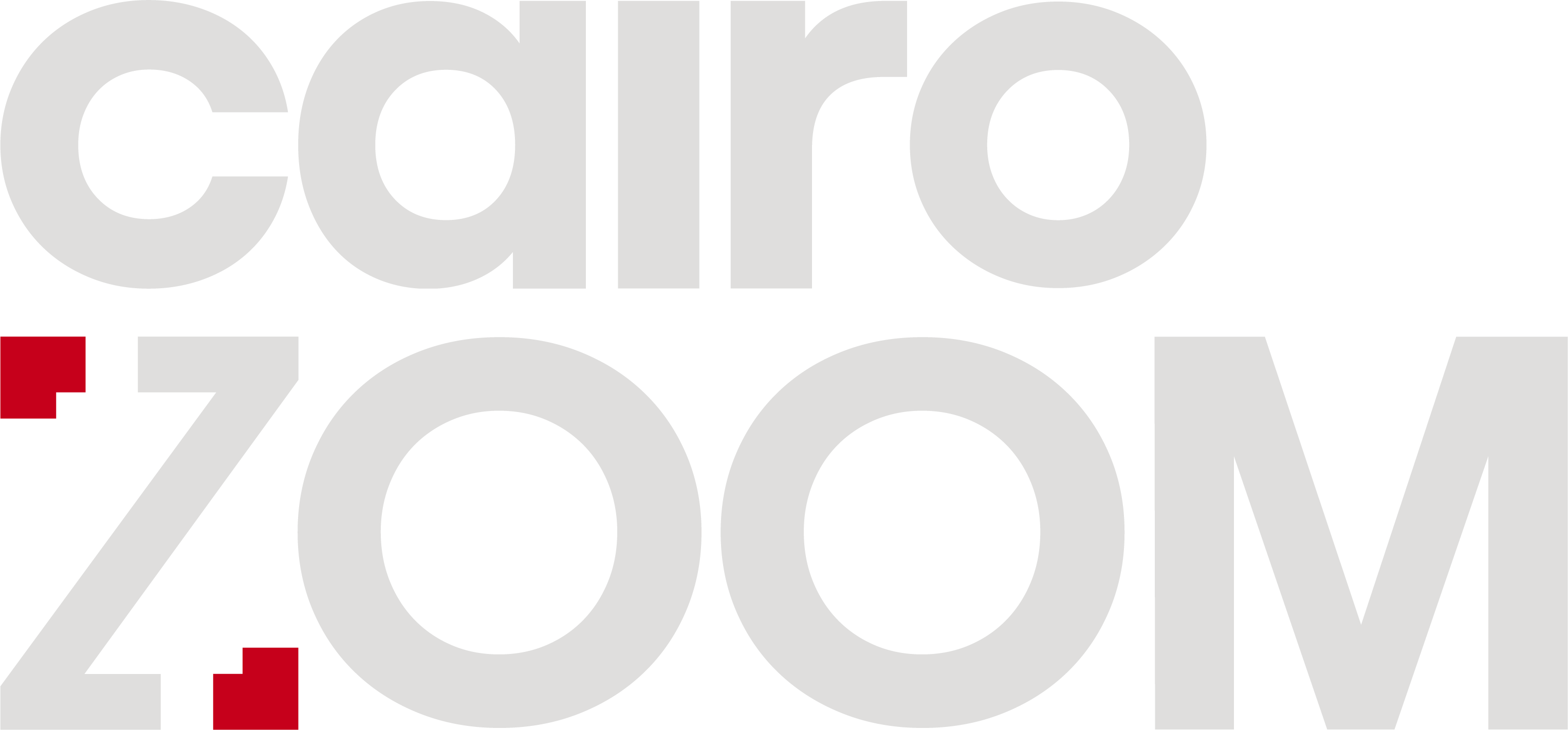12 Things I learnt on My Journey from Egypt to Silicon Valley
It wasn't an easy ride for 27-year-old entrepreneur Ahmed Ibrahim, who founded his smart earphone startup in the world's entrepreneurial capital, Silicon Valley. The man behind Audesis tells the story in his own words - ramen noodles and all.
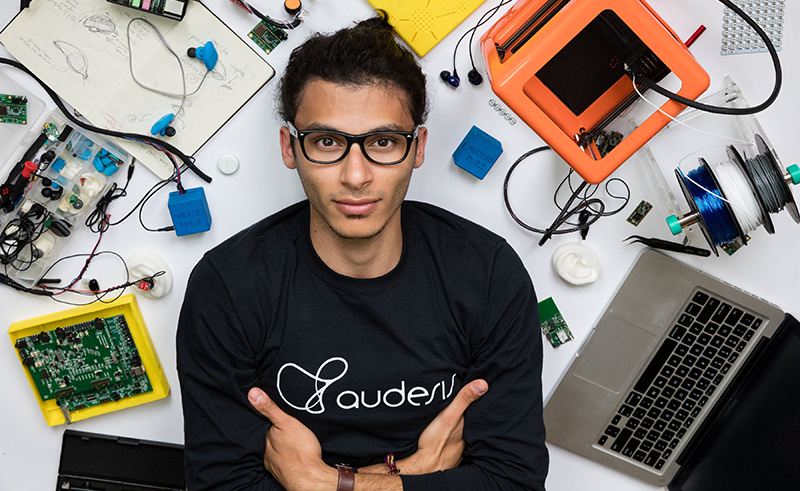
The story of how I made it to Silicon Valley is an unusual one. You’re probably thinking here goes another “unusual” story of an entrepreneur. Well, cliché or not, here is the catch: I haven’t made it IN Silicon Valley yet, I have only made it TO Silicon Valley. So here is some lessons I learned through the journey that can help you prepare for a similar ride.
1. Learn to pitch the right people
The first time I pitched my idea was to one of the distinguished cornerstones of my university. It was as scary as it sounds; the man had millions of dollars in funding for acoustic research and had literally been a part of the university since the year I was born. We had a formal meeting and I started pitching him the predecessor of my current startup, Audesis. It was a device that makes a noise cancelling bubble around you when you need to play guitar without bothering your roommate, or when you want to have a chat with someone in a loud place - it sure has changed a lot since then.
In a consumer market, we are all equal in opinion; experts, amateurs, and everyone in between.
Halfway through the presentation, he was indifferent and walked away. His last words to me were “so you’re claiming you can solve a problem that massive teams at Ph.D level are getting paid millions to solve?” He perceived it as a waste of time. Had I given up at this point, I would have missed on one of the most important lessons any entrepreneur needs to learn: in a consumer market, we’re all equal in opinion; experts, amateurs, and everyone in between. We’re all consumers and the only metric by which you judge your idea should be the number of people who love and use your solution.
2. Stop being a part-time entrepreneur
A brief while after the pitch, I took a job upstate New York and kept working slowly on Audesis. I built trains during the day, and at night I programmed Arduinos, designed and printed 3D models, and tested prototypes on people. The progress was slow, the startup scene was very limited in town, and the hurdles to moving this idea forward were piling up. So I did something that almost gave my Middle Eastern parents a heart attack. I quit my job and moved to New York City to work 100 percent on my startup. I made a lot of calculations on how to survive with no income, but nothing came close to what actually happened because there's always a massive chunk of ambiguity in an entrepreneur's path. You’ll need to do the same if you want to make it to Silicon Valley. True entrepreneurship requires dealing with the unknown at high-speed, but with lean solutions. And if anyone tells you that fully planning such adventure, or having a full-time job while properly growing a venture is practical or arguably doable, they’re lying.

Ibrahim's startup, Audesis, gives users the ability to have music anywhere they go without hurting their ability to communicate with others.
3. Use the risk to your advantage
To say the least, my experience in New York was extremely thrilling. It was also a major step forward towards Silicon Valley. Every subway ride gave me 200,000 possibilities (yes, I calculated it) of meeting my first customer, or placed me right under a neighbourhood, square, or a café where I could meet a well-known investor or a partner who could join forces with me to take my venture to the next level.
Every subway ride gave me 200,000 possibilities (yes, I calculated it) of meeting my first customer.
This thought would resonate in my head and push me forward like there is no tomorrow. How could it not? It was then and there that I learned the rewards of stepping into something bigger than you, and how opening these new doors brings massive opportunities aside from the risk.
4. Brace for impact, it will hurt less
The excitement you get from pursuing your own dream comes with a cost. I continuously had to deal with news about competitors dashing forward, I played the comparison game a lot and it always hurt badly to know a competitor is launching. I saw what they were missing in their solutions and even attempted to collaborate with them, but the email threads ended pretty quickly. I had to pay people from my limited savings to work for Audesis and that left me with two packs of ramen noodles a day and a 50 cent Arizona Ice Tea - I still think it’s quite the bargain. Young and naive, I ended up paying some people who didn’t deliver, so the empty stomach wasn’t the only thing that hurt. The more hardship I went through, the more pain I felt, yet the more resilience I built over time.

One of Ibrahim's many prototypes, while designing Audesis.
5. Catch the maker fever
Luckily, all that pain took place where I could still hear the subways coming and going. Opportunities renewing by the second as I heard a new subway stopping by the station, and felt it too; I was that close. My house literally shook when a subway train passed by, and the very thought that I can finish a new headphone prototype, walk less than 40 steps to be in a subway train and test it excited me to work harder than ever.
I had to pay people from my limited savings to work for Audesis and that left me with two packs of ramen noodles a day and a 50 cent Arizona Ice Tea.
Even when hungry, sleep deprived and sometimes working for three continuous days, some weird energy kept me going at full throttle for days as I was trying to adjust my prototypes based on the feedback I got from people in the streets.
6. Hack more and engineer less
Back when I was seven years old, I told my teacher I wanted to become a “genius” when I grew up; I wanted to be that guy in a white coat down in a basement, building solutions to make this world a better place. I didn’t want to necessarily be an “engineer” - but I ended up being one, with multiple degrees, due to social pressure. But even when I was in engineering studies, I hacked my way to enormous gains that people didn’t think were possible, not with the tools I used at least. During my first month in America, when I was 19, I stumbled upon a college community-wide competition for the best Halloween poster. It wasn’t just a competition because the winner would get a year-long job as a poster maker for the community. A few months earlier I had told my parents a white lie about having a scholarship in order for them to allow me to transfer to an American school, so I had to get that “scholarship” one way or another before they realise they were paying full college tuition; I was determined to win.
I had told my parents a white lie about having a scholarship in order for them to allow me to transfer to an American school, so I had to get that “scholarship” one way or another.
Since I had left my fancy stylus and graphic softwares back in Egypt, I had to hack, so I opened a PowerPoint presentation and started building. I built an entire mountain out of dozens of triangles that were arbitrarily sized and angled, and it gave it all the spooky-ness required. It took me over nine hours of nonstop work, but I managed to complete the entire poster in PowerPoint before handing it in. And I won! The point is: you can hack an infinite amount of solutions just by the comparably small knowledge you have to that of experts.
I used the same logic in New York City. I learned how to code in multiple languages, solder electronic circuits, and make product demonstration videos at home all through YouTube tutorials and nerdy websites. This was enough to put together something that resembles the solution I needed to test on potential customers.
7. Become a "big mouth"
Building things is great, but doing so without having a “big mouth” will probably not take you anywhere. All of my trips out of the house were full of conversations, asking people why they wear headphones, and how they’d like to customise what they hear. Of course, I was mistaken for a crazy man or treated rudely many times, but the few strangers that were extremely excited made all the painful encounters forgettable. You need to build something, take it to people, get feedback, and repeat. This opened the doors for a lot more hacking and a lot more speed towards a better product.

"Every subway ride gave me 200,000 possibilities (yes, I calculated it) of meeting my first customer," says the 27-year-old entrepreneur.
8. Take all the help you can get
I didn’t go through this exciting journey alone, and neither should you. I lived in a co-living space, where twelve people shared two bathrooms and one living room. It sounds bad, but boy was it heavenly. Every new-comer had a little tip that solved a new mystery in my adventure.
Throughout my entire journey, I’ve always had help from the people around me; my selfless parents who found themselves investing early in a startup they had no idea what it did, my awesome uncle who pitched me to every person who walked in his restaurant and slipped me money in my pocket (such a Middle Eastern thing); my school professor, who mentored me through the clumsy early days of entrepreneurship and still does until today; entrepreneurs in residence that went out of their way to help me outside the incubator where we met; my engineer landlord who helped me build multiple electronic boards and taught me the basics of a lot of electrical engineering tools that I use till today; my best friend, who spent days and nights listening to my early pitches by helping me rephrase words and teaching me the basics of a programming language; my college friend, who lets me crash on his couch for weeks when I couldn’t afford to pay rent anymore; the list goes on and on. Almost every person who crossed my path helped, one way or another. They did it for the passion and drive I had towards my vision.
9. Be ready for your lucky day, and make it count
It was a Saturday afternoon when I received an email from a premier Silicon Valley investment firm which we had applied to a month earlier. My heart skipped a beat when I read the subject “Congratulations, you are invited to Pitch Day.” That’s it, we’re in! I thought to myself. Out of around 400 startups in that round, we were good enough to make it to the final pitch day.
The first people I called with the thrilling news were my parents. I wanted to finally tell them something they can understand about this unfamiliar startup world. The moment I heard my dad’s voice I broke into tears, while a flashback of all the hardships I had to go through struck me; the moments the expert from my school walked out on me, the several times I had to eat ramen and ONLY ramen for a diet, the many times I borrowed money from friends, or the torturous times I had to watch the launch video of a competitor. I felt massive amounts of triumph, happiness, and a huge burden lifted.
For the three weeks that followed that email, I camped in a hotel room, thanks to my friend who was in town for work, and worked on my pitch to perfection.
For the three weeks that followed that email, I camped in a hotel room, thanks to my friend who was in town for work, and worked on my pitch to perfection. The journey to Palo Alto was surely full of signs that assured me I should move there. The Uber driver that picked me up from the airport had his own startup and related so quickly to what I was creating. The Airbnb host was no different, she was excited and was cheering for me up until the next day when I had to go pitch. I can safely say that pretty much everyone in Silicon Valley is in touch with the startup scene or at least very familiar with it, and it felt absolutely amazing to be there.

"You can hack an infinite amount of solutions just by the comparably small knowledge you have to that of experts, says Ibrahim, surrounded by all the prototypes he created himself.
10. Find a higher mountain once you reach the top
As for the pitch itself, those three weeks of camping paid off. I remember very clearly one of the VC’s asking me “that was one hell of a pitch, how many times did you practice it?” After trying to calculate the tens of times I had practiced the very same pitch, I decided that I would look stronger if I didn't share the real number, so I looked at him and replied “not much.” I surely blew the investors out of the water and within a day they offered me office space in Palo Alto and access to their intensive network and connections. I knew before I boarded the plane back to New York City that I would be coming back very soon. I also knew that I was going to leave the very little stability, the circle of friends I made and the tiny stable stone I was standing on. I took yet another leap into the unknown and aimed for an even higher mountain to climb.
As I was preparing to leave New York City my uncle called and told me that an investor friend of his had been at his restaurant and was interested to meet me. He and my uncle go way back and while that was an advantage to me, it was a lot of pressure to not let my uncle down. I packed a small bag and took a four-hour bus ride to meet him. I knew I had a few leads in Silicon Valley but I also knew that I needed to closely look for when my luck may strike. I pitched Audesis to the investor and he immediately fell in love with my energy and passion toward my idea. I won’t forget how he brought in more and more people into the room to hear my pitch. It felt like he was almost proud of me being his friend’s relative, and was showing me off. My gut told me that he was sold onto the vision and that he will support Audesis, and he did. Within three meetings, I had a check for my startup and the first investment in me as an entrepreneur. It felt absolutely euphoric and I couldn’t wait to see what the future had in stock for me.
11. Problems are a prerequisite of life; choose yours wisely
After I made it to Silicon Valley, I got a couple of investments, grew Audesis up to a team of five people and we were crunching all the work needed to launch our smart headphones. A few months in, new kinds of problems emerged that taught me a valuable lesson, not only about entrepreneurship but about how to live a happier life.
While building the smart headphones, my team and I found that most of our time was spent on sourcing activities, choosing one of the thousands of plastic manufacturers, and activities that were costly and don’t offer special value to the solution we’re giving people. For instance, just to add Bluetooth functionality to the headphones, we have to find a senior electrical engineer to build the radio transmitter component into our device, then cross fingers that the person we hire knows how to build software for it too, or else hire another engineer to do that. This is one of many processes that were tedious and distracting.
Midway through these issues, someone I really care about handed me a book that changed everything. As I read through Mark Manson’s best seller, one quote stood out; “True happiness occurs only when you find the problems you enjoy having and enjoy solving.” I started questioning the market entry strategy that I chose and I quickly realized that there was a better way.
More than anything, you’ll need the guts to leap into what’s uncomfortable and unknown and stop merely wishing that you’d make it here one day.
After a few team meetings, we agreed on a new direction. We decided to launch a simple app that can be virtually installed on any smartphone and any headphones to spread the Audesis magic to our users. Our mission is to give everyone the ability to have music in their ears anywhere they go without hurting their ability to communicate with others around them, or being less social. We’re giving people the ability to listen to “Eye of The Tiger” at work so that they kick ass and focus without being titled “the lone wolf that is always zoned out”. We launched a beta app for iPhones and now have 160+ users whom we're working closely with to get feedback. We got these users in two months after the beta release with minimal marketing efforts. And it finally made the journey feel better everyday.
12: You'll never feel certain; adapting is everything
Making it to Silicon Valley wasn’t easy for me, nor will it be for you, if that’s your intention. But it sure is doable to whoever wants to do it. More than anything, you’ll need the guts to leap into what’s uncomfortable and unknown and stop merely wishing that you’d make it here one day. Your creative hacks will blind people off of the imperfections in your prototype. Your “big mouth” will tell a story that makes them keen on giving you feedback and a recipe for a better solution.
Make sure that you work on problems that you care to solve. This will grow your determination and you’ll be a much happier entrepreneur. Your persistence to make it will make others jump through hoops to help you. Even though I couldn’t even mention half the trouble I went through to make it here, it doesn’t matter. I made it even with many odds against me, and so can you. You just need to want it enough.
You can download the Audesis app for free here.




